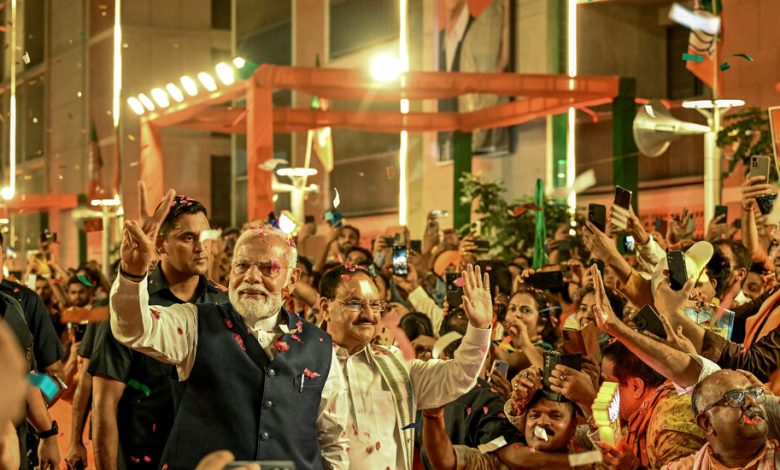Friday Briefing


Prime Minister Narendra Modi on Tuesday, after his party won the most seats in Parliament.Credit…Atul Loke for The New York Times
Modi’s choices
Narendra Modi has won re-election as India’s prime minister, though by a far narrower margin than expected. With his third consecutive term, the charismatic strongman has sealed his position as the country’s most significant leader in generations.
Despite having led India for a decade, Modi has in some ways kept his country guessing about his vision. On major issues — India’s relationships, its economy, its society and its government — it’s still unclear what sort of country Modi wants India to be.
In today’s newsletter, Alex Travelli, who covers South Asia, explains four of the big questions.
Where will India find friends?
India has spent recent years deepening its relationship with the U.S. It has gotten closer to American allies, including Japan and Australia, and has ordered high-end American weapons systems — the kind that create dependence down the road. And it is unlikely to side with China. In 2020, Chinese troops crossed into territory controlled by India and killed 20 soldiers in a skirmish. Modi has kept Beijing at arm’s length since then.
But Modi, 73, has signaled that he doesn’t want to be a U.S. ally. Some officials in his inner circle still regard the U.S. warily. American diplomats complain about New Delhi’s apparent efforts to erode democratic norms and the rights of minority groups. So India keeps its options open. After Russia invaded Ukraine, the U.S. tried in vain to persuade India to take a stand against the war. India still processes Russian oil (picking up the slack created by international sanctions). It still buys weapons from Russia.
India spent the Cold War trying to position itself as a nonaligned power. Old habits die hard.
